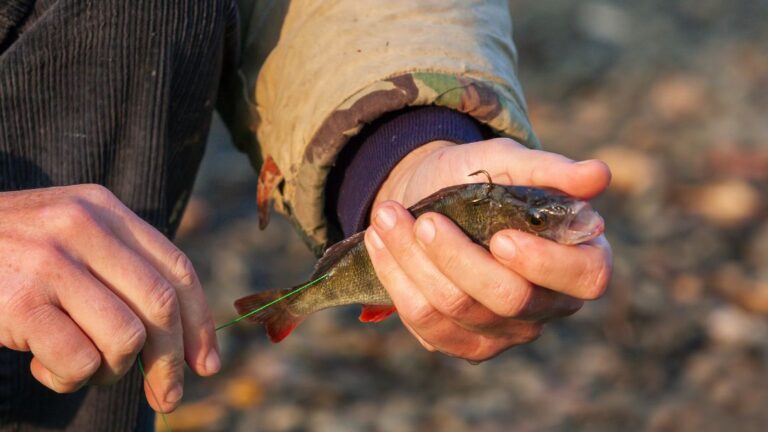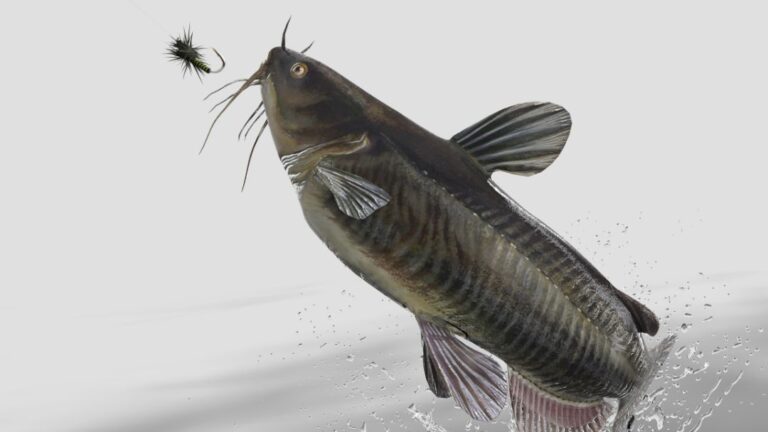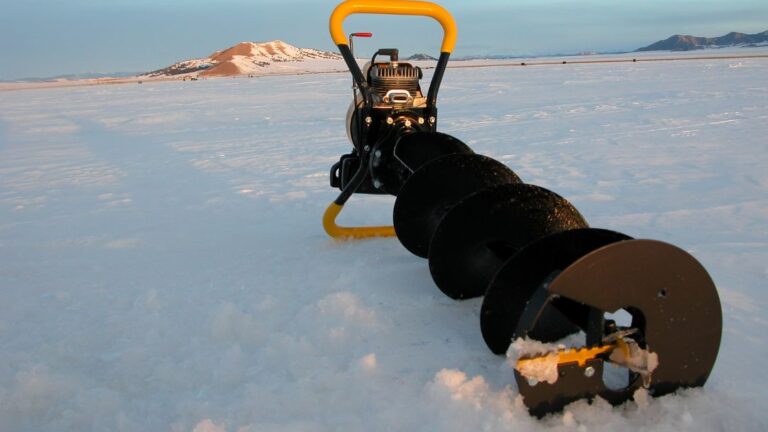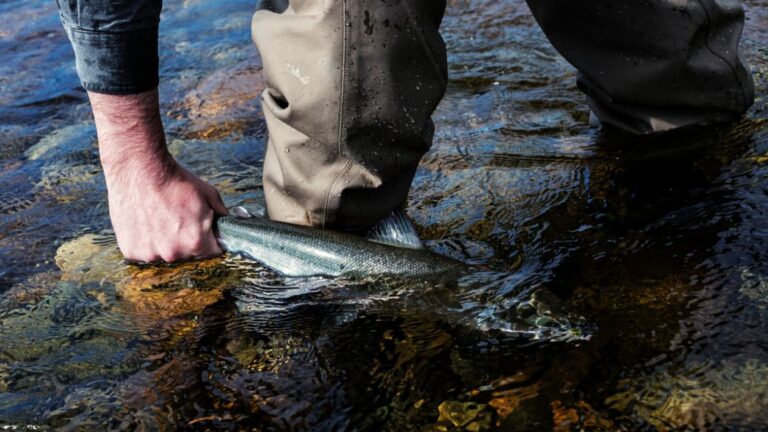Tangles and knots are common unless you have a well-spooled reel. It can be a frustrating experience to untangle the reel. Hence, it is necessary to prepare your fishing reel perfectly. But considering fish species, their weight, and fishing location is essential.
How many yards of the line for salmon fishing? The average fishing line length ranges from 250 to 400 yards. But it can be more or less depending on fish species, fishing location, casting distance, fishing technique, and capacity of fishing reel and spool line.
How Many Yards Of Line For Salmon Fishing?
It is a good rule of thumb to choose a fishing reel with 250 to 400 yards of line capacity. For instance, you might be targeting salmon that is 150 to 200 feet underwater.
Chinook or King salmon can be as long as 4.9 feet. They are tough to catch as they can swim pretty faster. With a few seconds, Chinook salmon can run 100 feet away.
Hence, you must choose a fishing reel that can cover the required distance even when salmon try to swim away.
A simple rule is using the filling line for up to 80% to 85%. It is best to avoid using the entire capacity of the line because it can easily break the fishing line or cause other issues.

How Many Yards Of Line For Salmon Fishing When Casting?
When it comes to casting to catch salmon, your fishing reel must provide enough line to cover the casting distance.
The ideal amount of yards of the line for salmon fishing depends on where you are fishing, what you are fishing, current conditions, and many other factors.
The average fishing line can be anywhere from 150 yards to 300 yards for salmon fishing. However, it can be more or less depending on the fishing conditions.
Shallow vs. Deep Water
For instance, if you are casting in deep water, a long fishing line is necessary to cover the casting distance.
The same rules apply if you are casting in the middle of the pond from a boat.
On the contrary, casting n a smaller river or stream doesn’t require too much fishing line.
Small vs. Large Salmon
You will need long yards of fishing line for larger fish than smaller ones.
For example, Pink Salmon and Sockeye Salmon are mostly small or medium in size.
But Chinook (King) Salmon and Coho (Silver) Salmon are giant species.
Make sure your fishing reel has enough yards of line to cover the extra force of large fish.
Fishing Reel Type
What type of fishing reel are you using? Baitcasting or trolling reels can withstand up to 90% to 95% of their capacity. They are equipped with larger spools and stronger drag systems.
But some fishing reels can’t take more than 80% of their capacity.
Spinning reels are one of them. Adding too much pressure will cause friction and may lead to break-off issues.
How Many Yards Of Line For Salmon Fishing When Bottom Fishing?
When it comes to bottom fishing, you want to use powerful fishing rods and strong reels.
It is a good rule of thumb to choose a fishing reel with at least 200 yards of fishing lines for bottom fishing.
However, it can be more or less depending on how deep the bottom is.
A simple rule is selecting a reel with four times higher yards of line capacity than the deepest point you plan to fish.
For instance, if you want to catch fish from 100 feet deep water, it is best to choose a fishing reel with a rating of at least 133 yards of line.
It will help you avoid foul hooking, tangles, and other unwanted situations.
How Many Yards Of Line For Salmon Fishing When Trolling?
If you are a freshwater new angler, make sure to keep at least 150 yards of line for salmon fishing for trolling.
But when you are an offshore angler, the figure should be four times or five times higher than regular fishermen.
Offshore fishing generally involves targeting larger and more powerful salmon species. They run faster at a long distance. You need to catch them from a long distance.
So, how many yards of the line for offshore fishing when targeting salmon fish? The minimum amount is 500 yards of line to stay in a safe zone. But 600 yards is better.
If you want to stay in the safest zone while targeting giant-sized salmon, choosing a fishing line with 800-1000 yards of line is the best option.
Otherwise, a fishing reel with a short fishing line for large salmon can’t cope easily with the strength and powerful swimming abilities. Fish will easily dump them.
How Many Yards Of Line For Salmon Fishing When Inshore Fishing?
Offshore fishing involves fishing in deeper and more expansive waters. In contrast, inshore fishing is associated with confined space and closer to shore.
The water is shallower, and the casting distance is minimal. A fishing reel with a shorter length of line is enough to target your preferred fishing spot.
But how many yards of the line for salmon fishing when inshore fishing?
According to most experienced anglers, a fishing reel with 100 yards of fishing line is enough for inshore fishing.
You don’t need to choose a fishing reel with an extensive line capacity. 100 yards appear enough to avoid any snags, tangles, rigging, etc.
What Factors Determine How Many Yards Of Line For Salmon Fishing?
A conscious angler doesn’t select fishing line capacity randomly. He/she considers all important attributes when choosing a particular length of fishing line.
The followings are the crucial points you want to take into account when determining the ideal length of the fishing line capacity.
01. Fishing Location
One of the primary tasks is determining where you are going to fish.
Your fishing line capacity will increase or decrease depending on the water depth, currents, and how much area the water covers.
Deeper water requires a longer fishing line than shallower water. Otherwise, your bait will fail to remain in the strike zone.
Salmon may go deeper into the water and swim away faster. A fishing reel with adequate yards of line can tackle such challenging situations.
When the water has strong currents, your fishing gear has to fight against excessive force.
A fishing reel with a long line capacity is a better choice to ensure better control over the bait or lure.
It allows you to present your bait or lure more effectively and reach the desired fishing zone perfectly.
02. Fishing Technique
What type of fishing technique are you going to use to catch salmon: casting, trolling, or bottom fishing?
Not all fishing technique requires the same yards of fishing line. For example, if you want to use a casting technique, 150 yards to 300 yards of line capacity is enough.
You need a similar range line capacity for catching fish from freshwater when using trolling.
However, when you want to go offshore fishing, choose a fishing reel with 600-800 yards of line capacity. This will keep you in a safe zone and reduce the risk of break-offs.
| Fishing Technique | Minimal Line Capacity |
|---|---|
| Casting | 150 yards to 300 yards |
| Trolling (freshwater) | 150 yards to 300 yards |
| Trolling (offshore fishing) | 600 yards to 800 yards |
| Bottom Fishing | 150 yards to 200 yards |
03. Salmon Species
There are seven species of salmon. Not all of them have the same size and behavior.
For instance, if you are targeting Chinook or King salmon, make sure to choose a fishing reel with an adequate yard of line capacity.
This giant fish has powerful strength. They can run faster and longer than small species. A lack of line capacity may cause breaking the line.
On the other hand, Pink salmon is one of the small species. You don’t need too much line capacity to tackle this fish.
| Salmon Species | Minimum Line Capacity |
|---|---|
| Coho (Silver) Salmon | 150-200 Yards |
| Chinook (King) Salmon | 200-300 Yards |
| Sockeye (Red) Salmon | 150-200 Yards |
| Pink (Humpback) Salmon | 100-150 Yards |
| Chum (Dog) Salmon | 150-200 Yards |
Noted: The fishing line capacity can be more or less depending on the other factors.
04. Spool Line Capacity
When choosing a particular number of yards of line in your fishing gear, it is necessary to consider the spool line capacity.
Generally, it is a good rule of thumb to choose a higher spool line capacity so that it can accommodate more yards of line.
But you can’t overfill or under-fill. Overfilling the spool line will cause tangling and backlash during casting. It will put excessive force on your reel’ parts and compromise its performance.
On the contrary, underfilling will cause reduced casting distance and compromised line management. It will diminish the reel’s drag system’s effectiveness.
Hence, it is crucial to maintain a perfect combination when choosing a fishing reel, spool line, and fishing line length.
Summing UP
Regardless of how good your fishing skill is, you can’t show your magic in water unless you select the right fishing gear.
If you are targeting giant-sized salmon from a large river or lake, make sure it has a minimum of 300 to 400 yards in length. This will help you to catch your target perfectly.
But when you want to catch smaller species of salmon from onshore, you don’t need too much line capacity. 100-150 yards are enough to win over them.
Hopefully, you got a clear overview of how many yards of the line for salmon fishing is required. Let me know your preference when it comes to choosing a particular length of fishing line.






